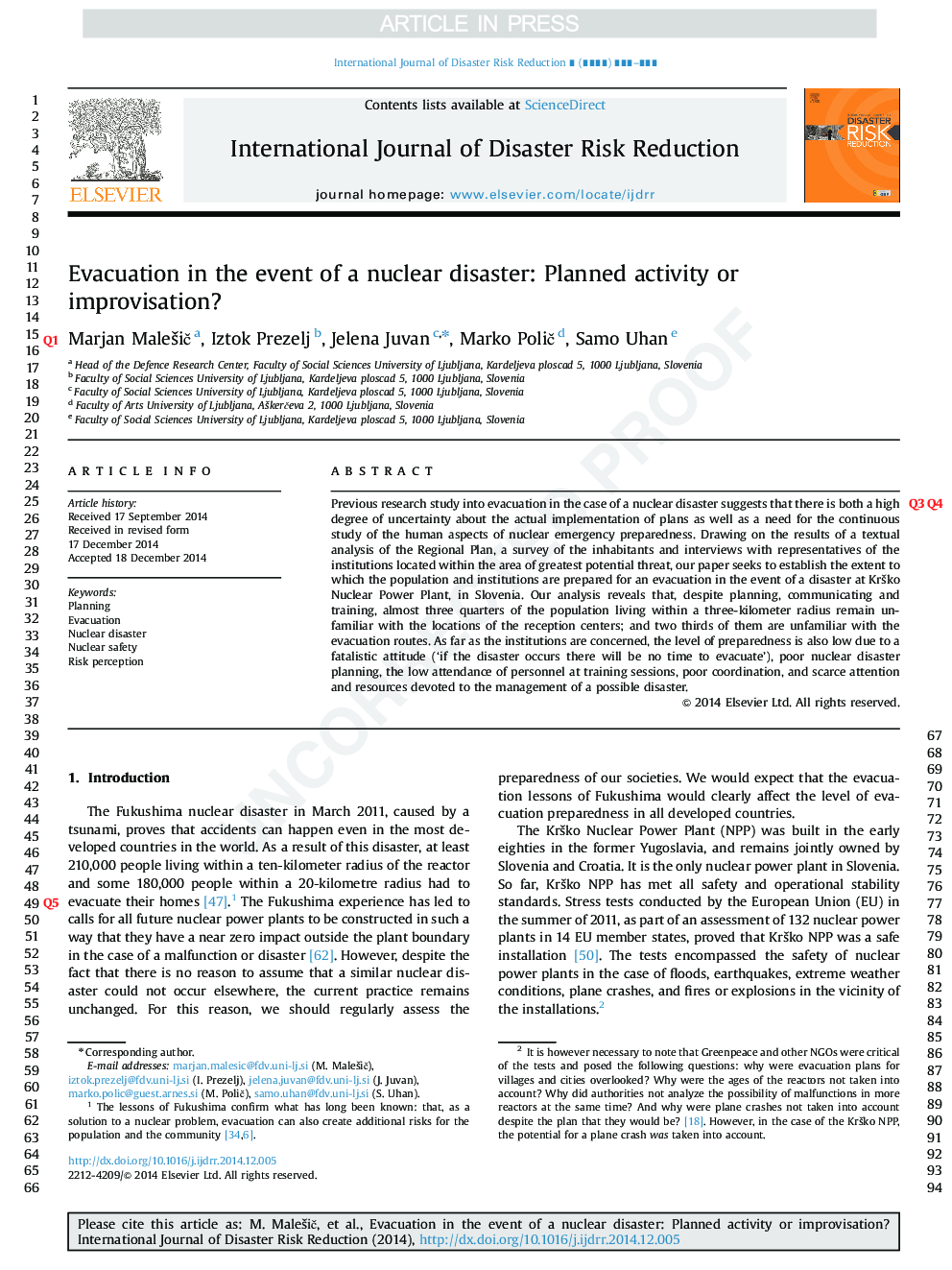| Article ID | Journal | Published Year | Pages | File Type |
|---|---|---|---|---|
| 7473247 | International Journal of Disaster Risk Reduction | 2015 | 10 Pages |
Abstract
Previous research study into evacuation in the case of a nuclear disaster suggests that there is both a high degree of uncertainty about the actual implementation of plans as well as a need for the continuous study of the human aspects of nuclear emergency preparedness. Drawing on the results of a textual analysis of the Regional Plan, a survey of the inhabitants and interviews with representatives of the institutions located within the area of greatest potential threat, our paper seeks to establish the extent to which the population and institutions are prepared for an evacuation in the event of a disaster at Krško Nuclear Power Plant, in Slovenia. Our analysis reveals that, despite planning, communicating and training, almost three quarters of the population living within a three-kilometer radius remain unfamiliar with the locations of the reception centers; and two thirds of them are unfamiliar with the evacuation routes. As far as the institutions are concerned, the level of preparedness is also low due to a fatalistic attitude ('if the disaster occurs there will be no time to evacuate'), poor nuclear disaster planning, the low attendance of personnel at training sessions, poor coordination, and scarce attention and resources devoted to the management of a possible disaster.
Related Topics
Physical Sciences and Engineering
Earth and Planetary Sciences
Geophysics
Authors
Marjan MaleÅ¡iÄ, Iztok Prezelj, Jelena Juvan, Marko PoliÄ, Samo Uhan,
